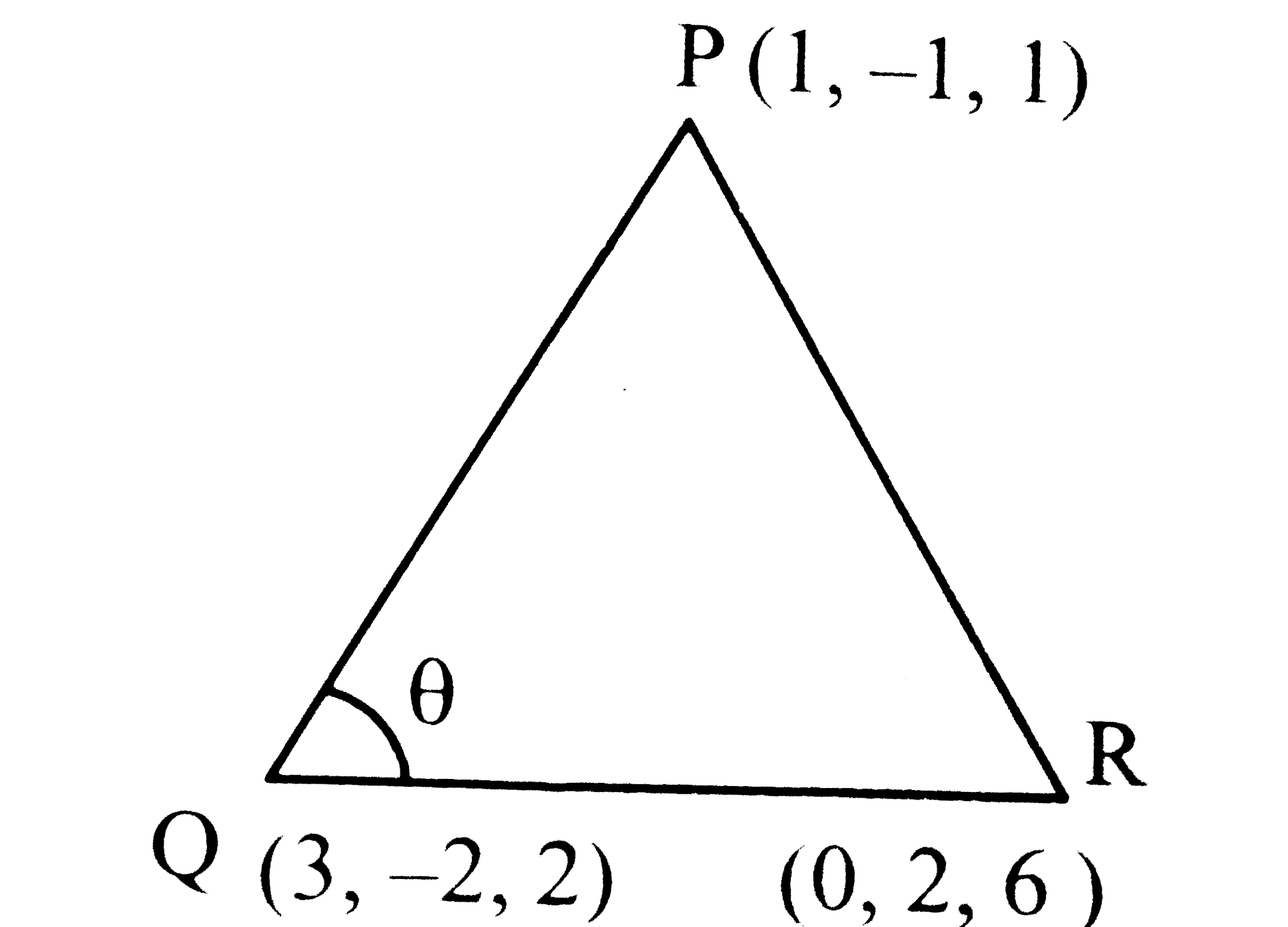The coordinates of the vertices P,Q and R of a triangle PQR are (1,-1,1), (3,-2,2) and (0,2,6) respectively. If ∠RQP=θ, then what is ∠PRQ equal to ?
30∘=θ
45∘+θ
60∘−θ
90∘−θ
The correct Answer is:D
Given,
P=(1,−1,1)
Q=(3,−2,2)
R=(0,2,6)

Direction ratios of PQ(a1,b1,c1)=(3−1,−2+1,2−1)=(2,−1,1)
Direction ratios of PR (a2,b2,c2)=(0−1,2+1,6−1)=(−1,3,5)
Let us calculate, a1a2+b1b2+c1c2
=(2)(−1)+(−1)(3)+(1)(5)
=−2−3+5
=0.
∴PQ⊥PRi.e.,∠QPR=90∘
In ∠PQR,∠P+∠Q+∠R=180∘⇒90∘+θ+∠R=180∘
⇒∠R=90∘−θ
Topper's Solved these Questions
Similar Questions
If the vertices P, Q and R of a triangle have coordinates (2,3,5),(−1,3,2) and (3,5,−2) respectively, then find the angles of the triangle PQR.
View SolutionIf the vertices P, Q and R of a triangle have coordinates (2,3,5),(−1,3,2) and (3,5,−2) respectively, then find the angles of the triangle PQR.
View Solution
Knowledge Check
The coordinates of the vertices P,Q and R of a triangle PQR are (1,−1,1),(3,−2,2)and(0,2,6) respectively. If ∠RQP=θ, then what is ∠PRQ equal to ?
A30∘+θB45∘−θC60∘−θD90∘−θThe vertices P, Q and R of a triangle are (2,1),(5,2) and (3,4), respectively. Then, the circumcentre is
A(134,−94)B(−134,94)C(−134,−94)D(134,94)The vertices of a triangle ABC are A (2,3,1) , B(-2, 2,0), and C(0,1,-1).
What is the cosine of angle ABC ?A1√3B1√2C2√6DNone of these
The base of vertices of an isosceles triangle PQR are Q 1,3 and R -2,7.The vertex p can be :
View SolutionFind the coordinates of the centroid of a triangle having vertices P(x1,y1,z1),Q(x2,y2,z2)andR(x3,y3,z3)
View SolutionThe co-ordinates of vertices P and Q of an equilateral ΔPQR are (1,√3) and (0, 0). Which of the following could be co-ordinates of R ?
View SolutionThe coordinates of P and Q are (- 3, 4) and (2, 1), respectively. If PQ is extended to R such that PR = 2QR, then what are the coordinates of R ?
View SolutionThe coordinates of P and Q are (-3, 4) and (2, 1), respectively. If PQ is extended to R such that PR=2QR, then what are the coordinates of R ?
View Solution
